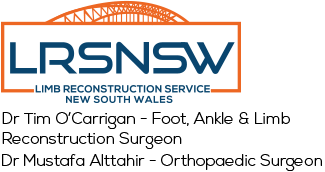Limb Lengthening and Reconstruction
Limb Length Discrepancy
Limb lengthening is a reconstructive procedure where the deformed bone is straightened or missing bone is replaced. It is performed in children and adults who have variations in their leg length because of diseases, injuries or birth defects. Limb lengthening procedure can be performed by minimally invasive techniques and may require a hospitalization of 1-2 nights.
Children born with congenital defects such as fibular hemimelia (absence of fibula bone), congenital short femur and hemi atrophy (absence of one side of body part) have unequal leg lengths which can be treated with a limb lengthening procedure. Other conditions which can be corrected by limb lengthening procedure include
- Growth plate injuries
- Bone infections resulting in leg length variations
- Broken bones followed by trauma
- Replacement of missing bone after surgical removal of bone tumor and fracture
The process of increasing the bone length depends on tissue and bone regeneration. When the bone is pulled apart, it tends to regenerate at the rate of approximately 1mm per day. There are two phases of lengthening until the bone is healed: distraction phase and consolidation phase.
The distraction phase involves lengthening of the bone. Consolidation phase involves hardening and calcification of this new bone which is still weak due to lack of calcium.
Limb Lengthening Devices
There are two types of devices available such as external fixators and internal fixators. The external devices are attached to the bone with wires or threaded pins. The internal devices are placed inside the body, on the bone or inside the bone marrow.
Limb Lengthening Process
The procedure involves:
Surgery
During surgery, a small incision is made to gain access to the part of the bone to be cut. A hospital stay of 1-3 days may be required after which rehabilitation and application of splints will be done.
Distraction Phase
Bone lengthening begins a few days or weeks after the surgery. With the use of external fixators, the patient or family member performs small twists or by applying pressure on the leg. When the bones are pulled apart new bone gradually starts to grow between the bone ends. The rate of growth is usually 1mm per day. X-rays are obtained every 2 to 3 weeks to check for new bone growth, nerve and muscle function, and to avoid any further complications.
Consolidation Phase
After achieving the required length, all adjustments made to the device is stopped. The newly formed bone is weak and will tend to break without the support of external or internal devices. Bone healing is evaluated with xrays that are obtained once a month. the Xray shows the degree of healing and after the bone is healed the external fixateur is removed.
Removal of the External Fixator
The removal of the external fixator device is done under general anaesthesia. After removal a cast or boot may be placed on the limb for a month as additional protection. No cast is placed for patients with an internal fixator device as the support placed internally protects the bone.
Complications of Limb Lengthening Surgery
Bone Complications include
- Delayed union or nonunion: Bone healing is delayed or fails to complete.
- Premature consolidation: It occurs when the bone healing is abundant or fast.
- Axial deviation: It occurs because of unbalanced forces that bend the bone during the lengthening process.
Soft tissue complications include
- Muscle contractures: This occurs when the soft tissues cannot adapt to the changes in bone length
- Muscle weakness: reduced movement and weight bearing can contribute to this and it is helped by physiotherapy and progression to full weight bearing.
- Nerve Injury: This can lead to numbness or muscle weakness and on some occasions Complex Regional Pain Syndrome
You will need the Adobe Reader to view and print these documents. ![]()
